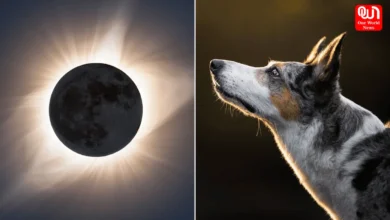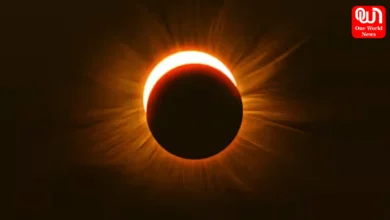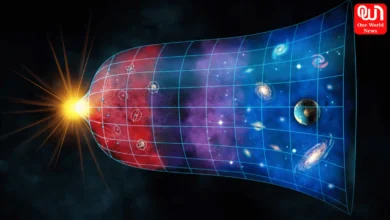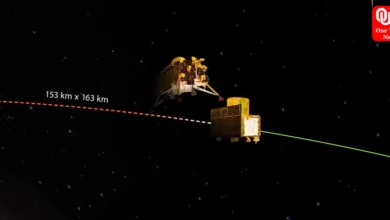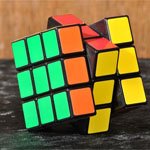
Since time immemorial, people from all age groups have been playing with a Rubik’s cube, which has been widely considered to be the world’s best-selling play-item. So, on its 40th anniversary, ‘One World News’ brings to you its story of evolution and popularity.
ERNO RUBIK
Rubik’s cube is a 3D combination puzzle invented in 1974 by a Hungarian sculptor and professor of architecture, Erno Rubik. But it was after he got it licensed with the ‘Ideal Toys’ in 1979 that the magical cube won the ‘German Game of the year’ special award for Best Puzzle in 1980.

Although Rubik built the cube as a teaching tool to help his students understand 3D objects, he never realized that he had created a ‘puzzle’, until he scrambled his new cube and then tried to restore it.
MAGICAL CUBE SET-UP
In a Rubik’s Cube, each of the six faces is covered by six solid colours where white, blue and orange are opposite to yellow, green and red respectively. Red, white and blue are arranged in a clockwise manner. An internal mechanism enables each face to turn independently, thus mixing up the colours. For the puzzle to be solved, each row should consist of only one colour.
There are six central pieces which show one coloured face, twelve edge pieces which show two coloured faces, and eight corner pieces which show three coloured faces. Each piece shows a unique colour combination, but not all combinations are present (for example, if red and orange are on opposite sides of the solved Cube, there is no edge piece with both red and orange sides). The location of these cubes relative to one another can be altered by twisting an outer third of the Cube 90°, 180° or 270°.

The original (3×3×3) Rubik’s Cube has eight corners and twelve edges. There are 8! (40,320) ways to arrange the corner cubes. Seven can be oriented independently, and the orientation of the eighth, depends on the preceding seven, giving 37 (2,187) possibilities. The objective is to move the pieces around until each side of the cube is a solid colour.
STAR PERFORMANCE
The first world championship was organised by the Guinness Book of World Records held in Munich on March 13, 1981. Before the tournament, all Cubes were rotated forty times and lubricated with petroleum jelly, where Jury Froeschl was eventually declared the winner, with a record of 38 seconds.
The first international world championship was held in Budapest on June 5 1982, and was won by Minh Thai, a Vietnamese student from Los Angeles within 22.95 seconds.
The current world record for single time on a 3×3×3 Rubik’s Cube was set by Mats Valk of the Netherlands in March 2013 with a time of 5.55 seconds at the Zonhoven Open in Belgium.

In addition to official competitions, informal alternative competitions have been held which invite participants to solve the Cube in unusual situations. Some such situations include:
• Blindfolded solving.
• Solving the Cube with one person blindfolded and the other person saying what moves to make, known as “Team Blindfold”
• Multiple blindfolded solving, or “multi-blind”, in which the contestant solves any number of cubes blindfolded in a row.
• Solving the Cube underwater in a single breath.
• Solving the Cube using a single hand.
• Solving the Cube with one’s feet.
• Solving the Cube in the fewest possible moves.
The fastest robot to solve a Rubik’s Cube is Cube Stormer II, developed by Mike Dobson and David Gilday. It solved a Rubik’s Cube in 5.27 seconds.
The smallest working Rubik’s Cube is 8 mm wide. It was created using a 3D-printer by Evgeniy Grigeriev (Russia).

The youngest person who solved a Rubik’s Cube was Ruxin Liu (China), who was 3 years 118 days old when she solved the cube in 1:39.33 at the Weifang Open on 14 April 2013.
Bernett Orlando (India) composed Christmas tree out of 2025 cubes in Cologne (Germany) in December 2009.
RUBIK ITEMS
There are different variations of Rubik’s Cubes with up to seventeen layers:
• The 2×2×2 (Pocket/Mini Cube),
• The standard 3×3×3 cube,
• The 4×4×4 (Rubik’s Revenge/Master Cube),
• The 5×5×5 (Professor’s Cube),
• The 6×6×6 (V-Cube 6),
• And, 7×7×7 (V-Cube 7).
The 173 ‘Over the top’ cube is currently the largest and the most expensive, costing more than a thousand dollars.
The largest mosaic made from scrambled Rubik’s Cubes measured 67 m (220 feet) x 4 m (13 feet). The mosaic, showing the Macau skyline, was created in December 2012 by Cube Works Studio from 85,794 cubes. It took 90 days from designing to completion.

Besides, Rubik Cubes’ Key chains and photo puzzles are also available in the market. It is a good source of entertainment which encourages logical thinking and improves problem solving skill at the same time. So, from kids’ puzzles to several online games, Rubik game has always been in demand.
Photo Courtesy : http://giveemhellbama.com/wp-content/uploads/2013/09/rubiks-cube.jpg
Photo Courtesy : https://c1.staticflickr.com/5/4058/4681747142_9e06086487_z.jpg
Are you a good Rubik player and want to share your experience with us? Drop us a feedback at info@oneworldnews.in

